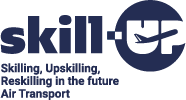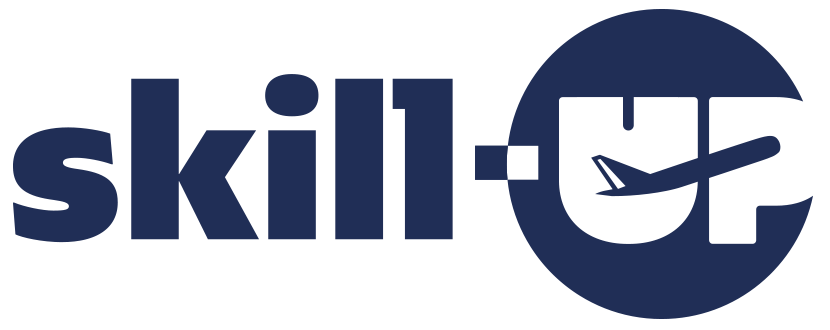
25 Jun Explore the RPAS personas!
Three Personas for the RPAS domain, with reference to the U-space operational environment, were produced BY SKILL-up, as follows:
👉Mary Jane, a new entrant remote pilot in the Open category;
👉Marco, a professional remote pilot in the Open category, to be upskilled for the Specific category;
👉Oscar, a professional remote pilot to be reskilled to fly optionally piloted vehicles and remotely pilot air taxis within the U-space;
The Mary Jane RPAS Persona (Figure 34) was created to represent a new entrant remote pilot who will be trained as a pilot in the Open category. She represents many hundreds of teenagers who have recently finished their high-school and are looking for some acknowledgment and easy access to a salary by doing something that they really love – flying their drones, editing the videos, and posting them online. She lives in an EU city, with easy access to mainstream media, information, gadgets and technology. Ever since she was given a commercial camera drone, she has not stopped upgrading it, and adding extra features and tunes to her videos. She finds this type of “aviation” as an attractive alternative to common/conservative hobbies/jobs activities and wants to pursue an initial career as a filmmaker and air photographer. She will face a significant change in responsibility, shifting from drone flying for her own interests, to flying commercially for other clients – this will challenge her in the sense that she will experience stress, will have to manage expectations (her own, the company and the clients’), highly demanding goals and quality of the final product. Although, being used to autodidactic learning, she is to be taught new competences and skills, from which it is worth highlighting the following: good orientation in 3D space, adaptability to changing operations and weather, humility, coping with frustration of failing, analytical thinking and managing a considerable amount of information; on the technical side, she has to be skilled to having good eye-hand coordination, understanding technical drawings, environmental protection, aerodynamics and performance of multi-rotors, automatic flight, data links and telecommunication, air law and flight procedures
Marco reflect the enthusiasts stepped into drone flying a few years ago, gathering considerable knowledge on the operation of complex multirotors in the Open category. He got his knowledge from self-learning, trial and error, as well as company and regulator promoted courses. Marco represents all young tech savvy persons who have a technical/engineering background and have decided to take the leap into drone flying, first by building their drones, flying them (and crashing several times, of course). Originally from a small village, he moved to a major city to pursue his EU level 5 degree on a technical subject. During his course he started to buy drones in parts, build them and test-fly them in an open field. As an introvert geeky-like person, he would rather be alone working on his personal projects, than enjoying any social contact with friends. With a strong connection to his family, he loved returning to his village on long weekends and holidays, as he could practice new skills and test new upgrades on his drones. Currently with five -year experience in drone flying in the Open category, for a major player in the field of aerial imagery and structure inspection, he needs to be trained as a remote pilot in the Specific category. He will be facing considerable changes in his roles and tasks, shifting from outdoor eye-on-drone, i.e., visual lineof-sight (VLOS) remote pilot used to fly for 25 minutes at a time, to beyond line-of-sight (BVLOS) remote pilot who will be commanding a mission that may last up to 6 hours. Additionally, he will change from a single pilot operation to a multi-crew environment, encapsulated inside a ground control station with other subsystem operators. Marco has to be upskilled and trained, using high end flight simulators. As a result, his soft/transversal competences will have to be upskilled to be able to work in a multi-crew environment, cope with frustration, trusting onboard sensors and information, expand his multi-tasking abilities, and a considerable increment in his communication skills, both for team coordination, briefing and debriefing, as well as for aeronautical communication with UTM. On a technical side, he will have to gain new competences on U -space procedures and regulation, air law, airspace management and flight planning, human factors, aerodynamics of f ixed wing aircraft, meteorology, broad-band long range datalinks, contingency and emergency procedures.
The Oscar RPAS Persona was created to represent a highly probable future major need that is to have pilots that are able to fly an aircraft remotely, via tele-operation, as well as be a part of new projects that aim at converting certified aircraft into optionally piloted/automatic a ircraft, such as air taxis, in the urban mobility scenario. Oscar, who turned 38, is married and has two children. He moved to the city at the age of 19 to enroll in a technical/engineering course. He loves his job as a remote pilot in the Specific category, where he is in charge of maiden flights, persistent operations, integration and testing of new payloads. Additionally, he is a remote pilot instructor, and has a civil personal pilot license. As an aviation enthusiast, he loves fixed wing aircraft and h as gathered considerable amount of aviation relics in his studio tool-shop, in his house in the suburbs of the capital. Being recognized as an experienced remote pilot and team leader with good communication skills, Oscar will have to step out of his comfort zone to be able to meet the challenge of being reskilled to become a remote pilot and onboard pilot of optionally piloted single engine aircraft. As a result, he will have to further deepen his competences to be more alert to retain and increase his situational awareness, train procedures and analytical thinking for fast(er) and safe(r) decision making capabilities. At an age of 38, he will have to adapt to new responsibilities and roles, as these “new” aircraft that he will be commanding are to be flown with people onboard – these pose a considerable challenge, where he will be forced to learn more and have a more profound sense of risk, its assessment and proper mitigation. On the technical side, he will have to deepen his knowledge on UTM, ATM and flight planning, system automation and respective disengaging of the automatic systems in case of failure to manually fly the aircraft, artificial intelligence on the cockpit, as well as operational and human limitations.






